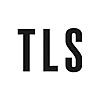In the late nineteenth and early twentieth centuries the British novel was at the pinnacle of its popularity and ambition. But it faced an existential crisis: how could realist fiction represent the sublimely vast scales of deep time and space? The various answers to this question are the subject of Aaron Rosenberg’s engaging and thought-provoking study. There is, as he notes at the outset, a “scalar paradox” between “the convincing richness of detail” essential to realism and the magnitude of life’s dimensions, made vividly apparent by Darwin’s theory of evolution. For fiction to depict the ungraspable realities of millennia and the universe, its “representational capacities” would have to employ new narrative strategies and forms.
Rosenberg illustrates how four novelists set out to do just that. His study comprises chapters on H. G. Wells and the temporal sublime in The Time Machine; Thomas Hardy’s juxtaposition of Tess with the “elemental forces of an inhuman universe”; Joseph Conrad’s depiction of “the failure of reason, the loss of proportion” in the colonized world; and Virginia Woolf’s negotiation between the lived moment and the sweep of environmental history in Orlando.
This choice of authors is conservative and Woolf’s appearance potentially tokenistic. Yet Rosenberg’s readings are sensitive, and through them emerges the quietly subversive argument that these novelists used genre fiction – romance, melodrama, horror, historical fiction – to dramatize scales of reality otherwise beyond the capacities of the tools of realism or experimental fiction. For modernist critics it is James Joyce who defined new ways to fictionalize scalar paradox, with Stephen Dedalus and Leopold Bloom ostensibly located in the astro-cosmic universe; the alternative approaches identified by Rosenberg correspond instead to Wells’s response to Finnegans Wake in a letter to James Joyce in 1928 (by which time several sections of the book had been published): “I don’t think it gets anywhere … What is the result? Vast riddles”.
Scale, Crisis, and the Modern Novel is avowedly positioned between biographically informed close reading and the perspective of “strategic presentism”, defined stridently in 2015 in the “V21 Manifesto”, published by a group of American professors of Victorian studies. In this instance framing the study with attention to contemporary theories of the Anthropocene offers to expand the intellectual ambitions of close reading. Rosenberg proposes convincingly that readers today are in an analogous position to those at the fin de siècle: newly conscious of strange forces that outrage the limitations of the realist novel. Then this consciousness recedes for much of the book. In the end it is unclear whether “strategic presentism” could ever be more than a framing device. Taken further, it risks flattening the nuance of detailed analysis into transhistorical conclusions that give the field much sought-after relevance, but possibly endanger the core of academic study. This too is a scalar paradox.
The post Ungraspable realities appeared first on TLS.

 By Times Literary Supplement | Created at 2024-11-14 02:17:56 | Updated at 2024-11-24 07:16:14
1 week ago
By Times Literary Supplement | Created at 2024-11-14 02:17:56 | Updated at 2024-11-24 07:16:14
1 week ago








